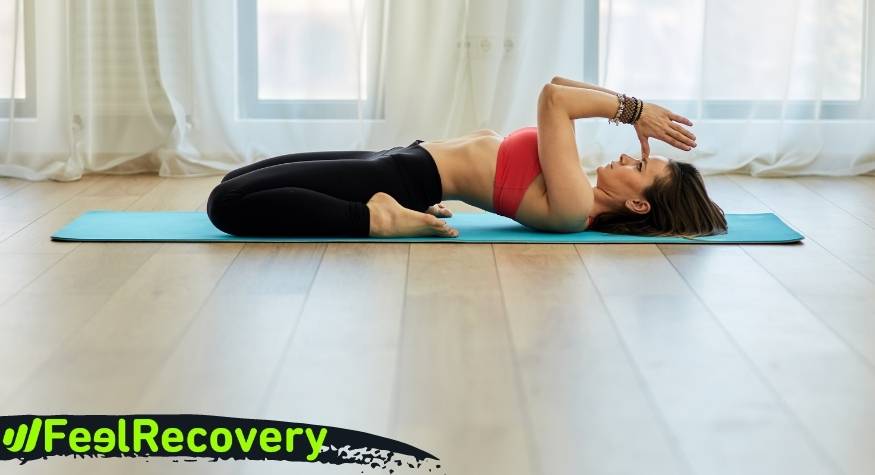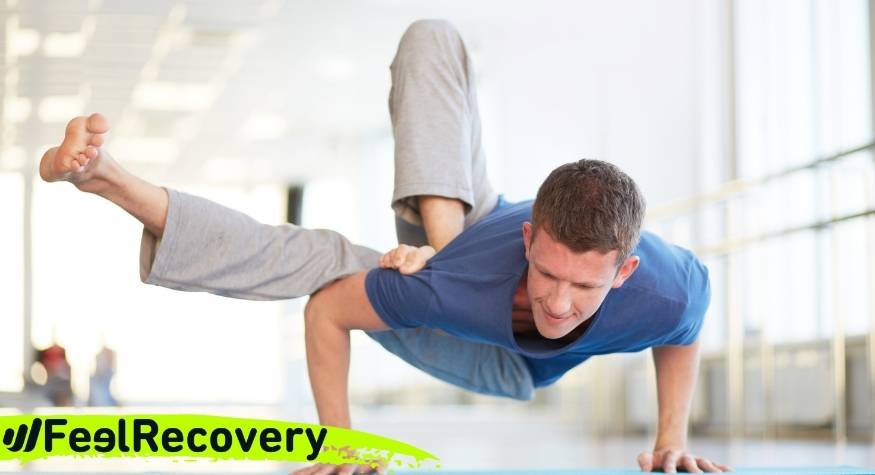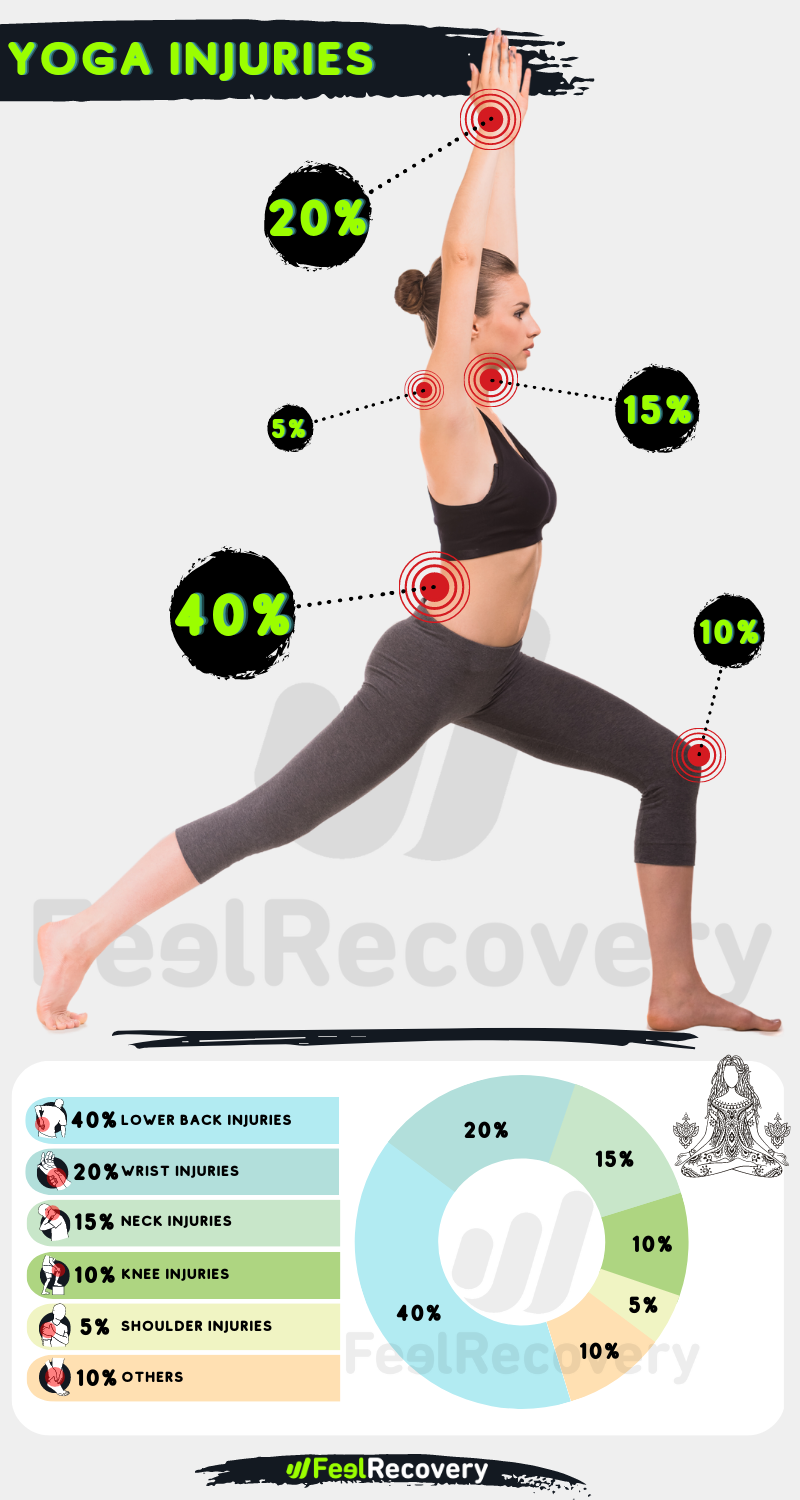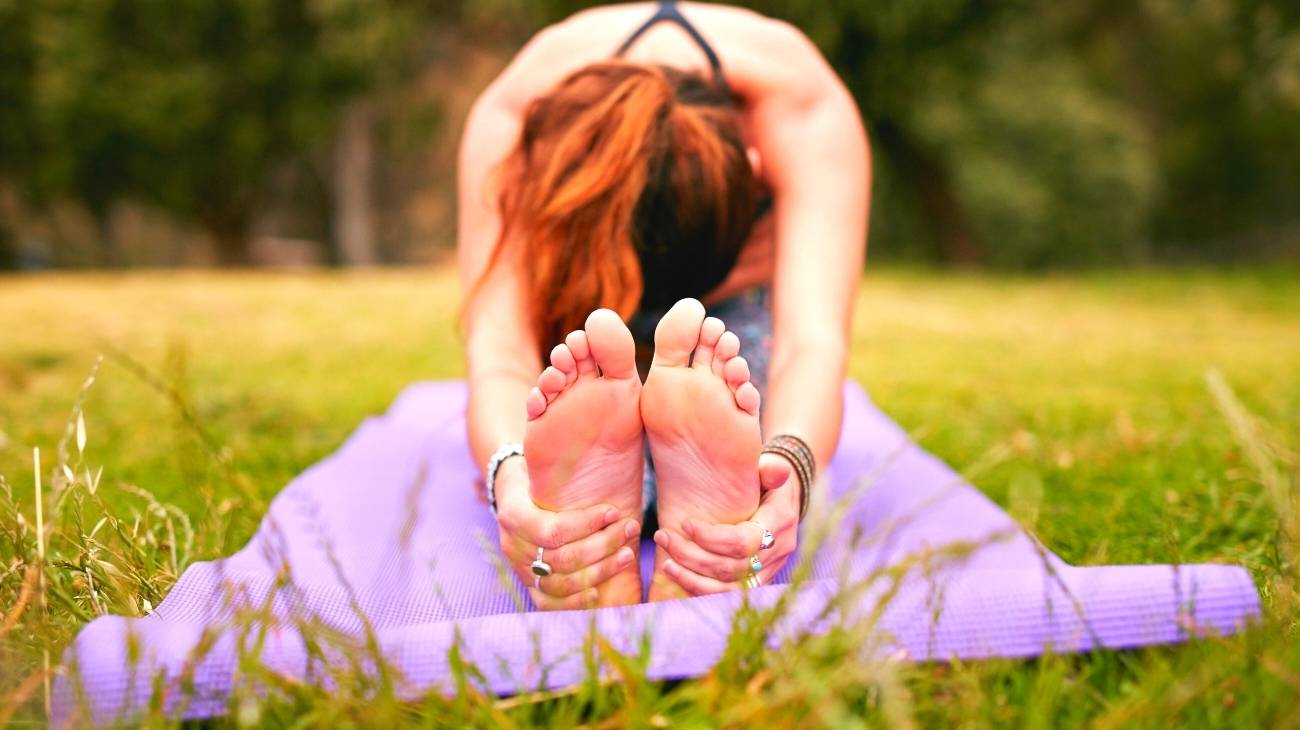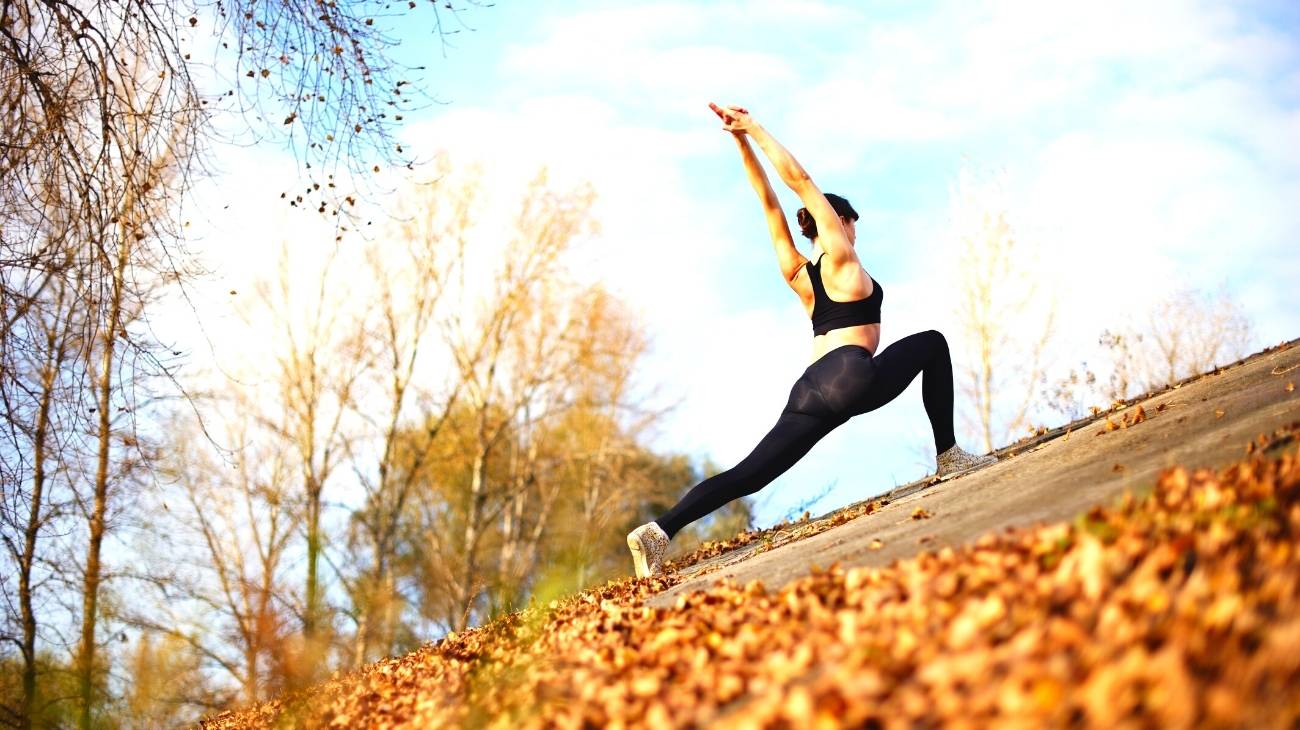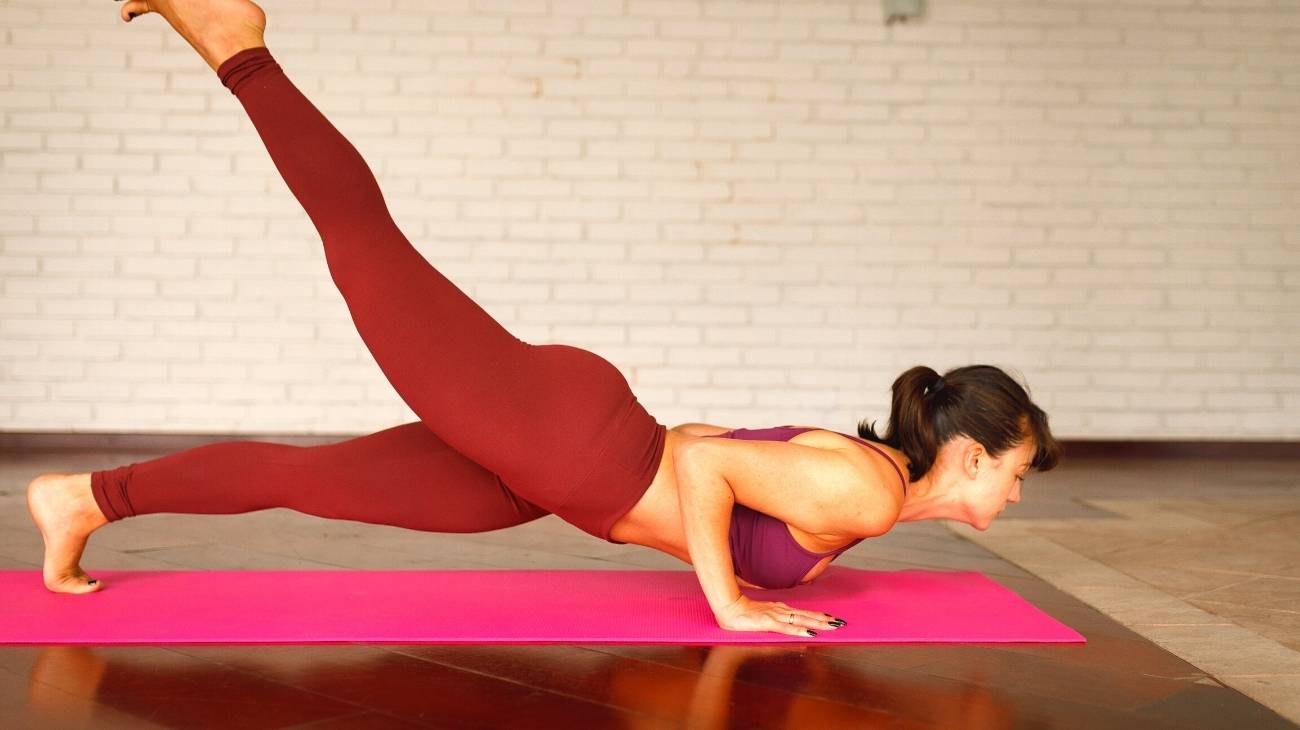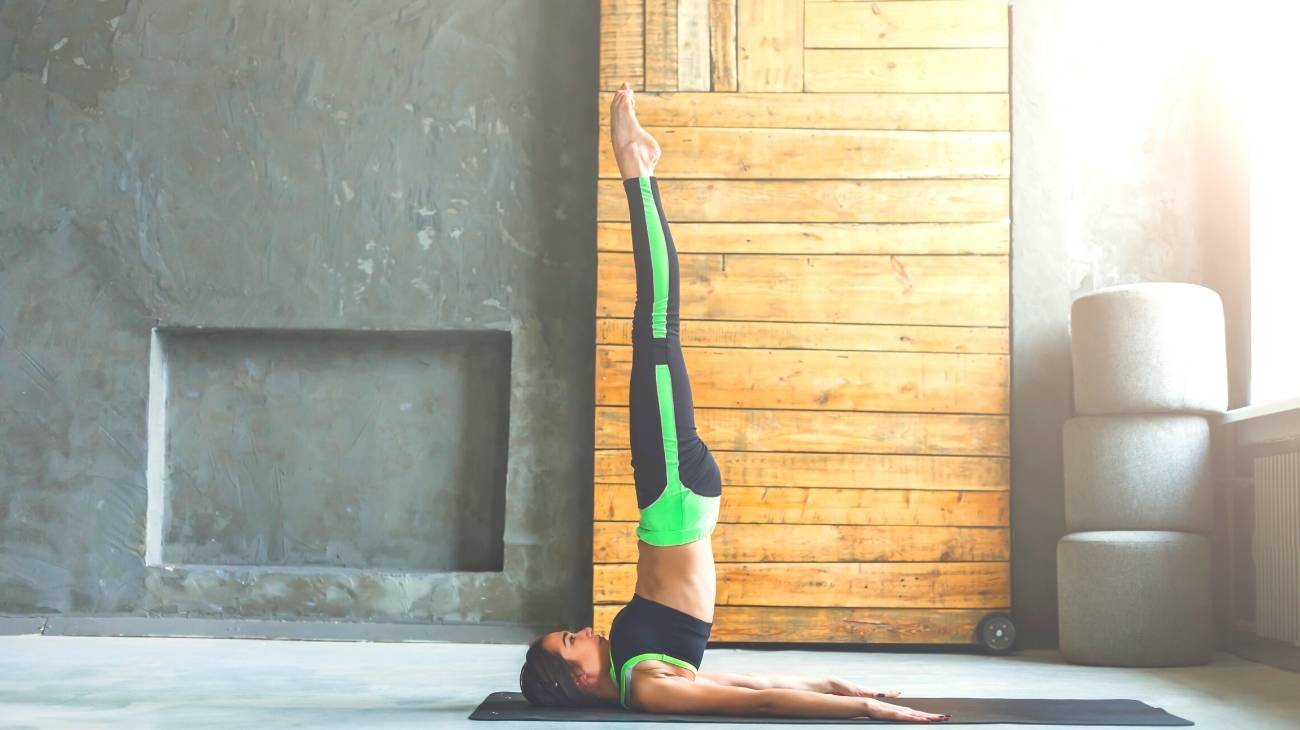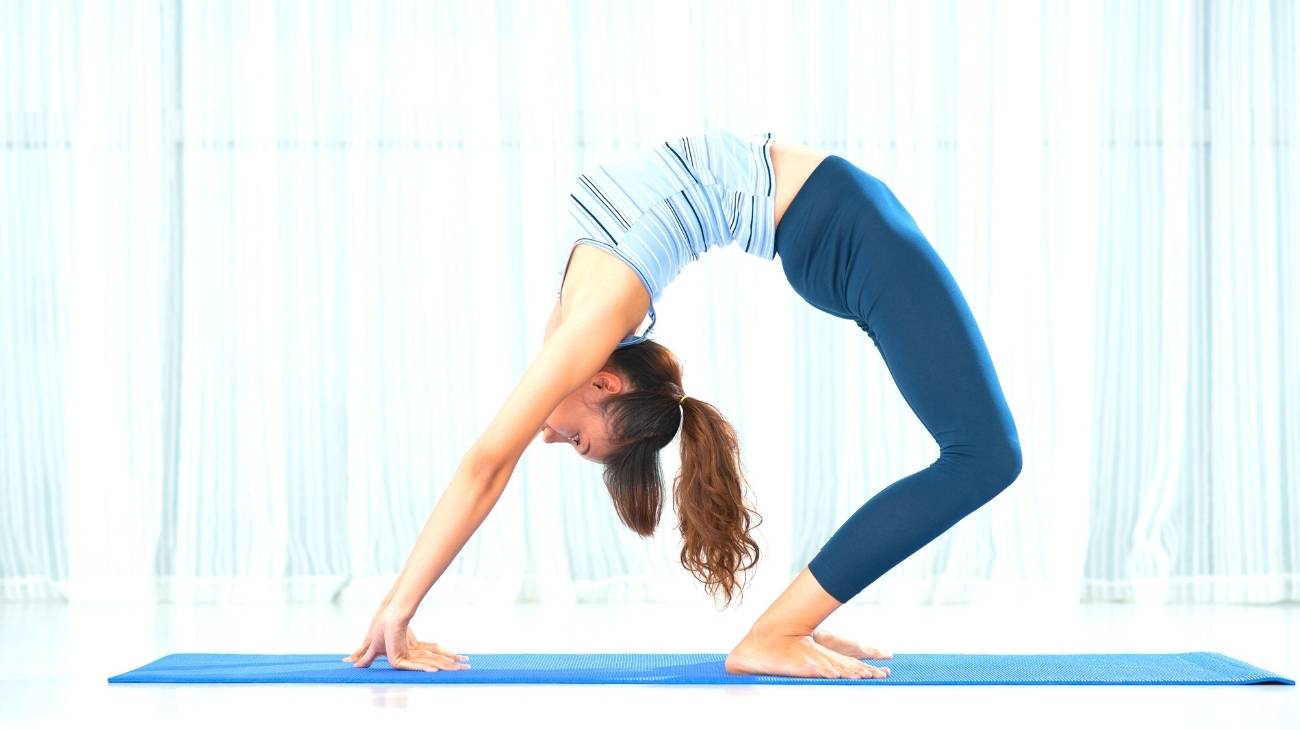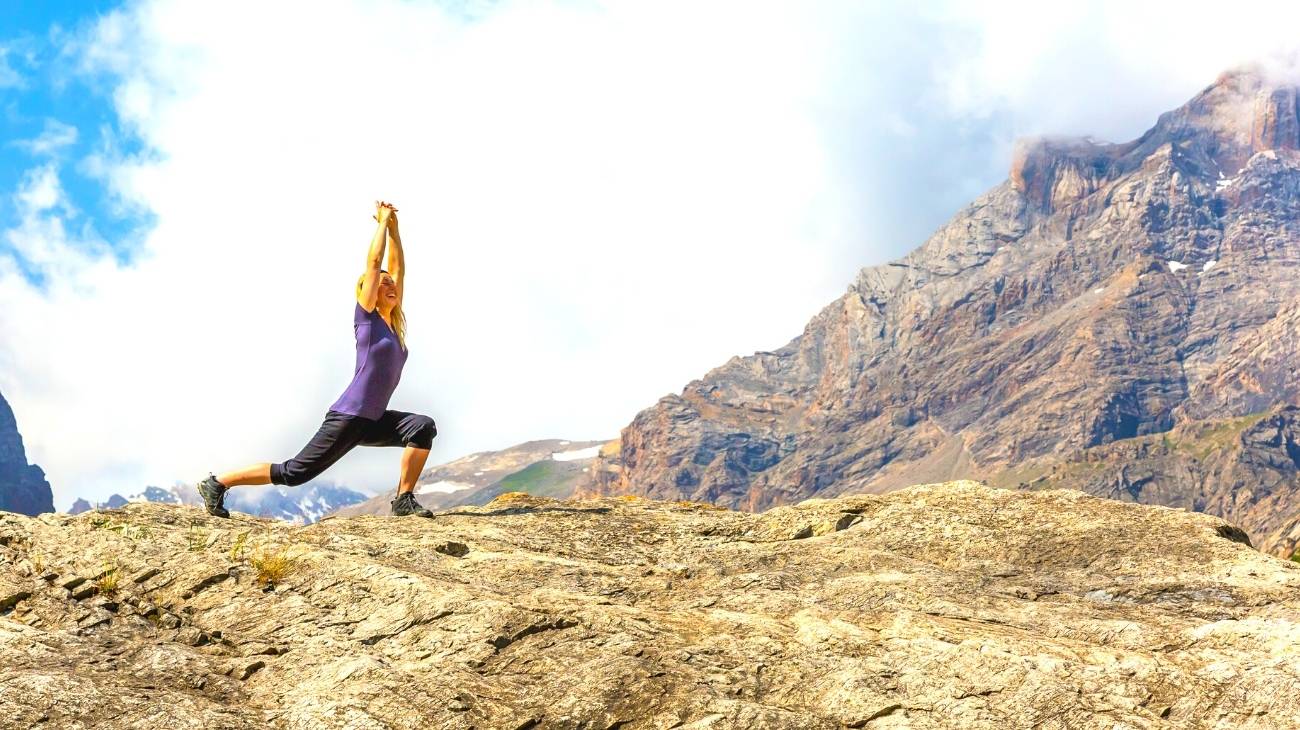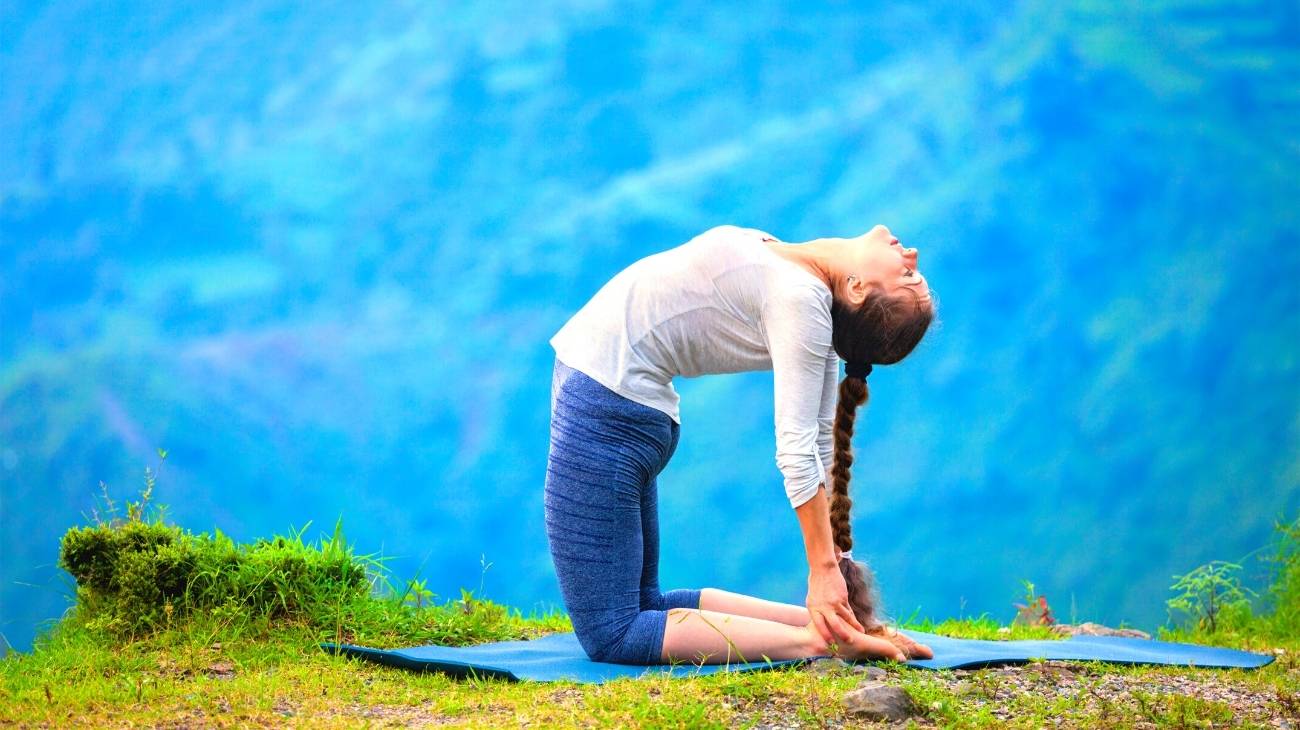Injury prevention in yoga is very important. This discipline may seem harmless but there are many yogis who end up injured after performing an asana. Today we will give you some guidelines so that you don't have the same luck and can practice yoga safely.
Preventing the most common yoga injuries is not that difficult, you just need to take certain measures to reduce the risk to a minimum. Join us and find out which are the main conditions to watch out for and how to avoid them. Here we go!
What are the most common types of injuries when doing Yoga?
Among the most common yoga injuries are certain conditions of the neck, shoulders, hands, wrists, lower back, hips, knees and hamstrings. Yogis can injure these areas of the body due to poor technique, overuse or sudden trauma.
The most common injuries in yoga are:
- Neck injuries: these are related to asanas that involve the neck flexing, stretching or weight bearing. Standing postures over the head and shoulders are among the most dangerous. Prominent among these conditions are bulging spinal discs and cervical fractures.
- Shoulder injuries: The chaturanga posture is frequently associated with these injuries because it can put a lot of pressure on this joint. Overuse and possible trauma are the main causes. Rotator cuff injuries (tendinitis and tears) and shoulder dislocations are the most common.
- Hand and wrist injuries: These are mostly caused by overuse. Some of the postures implicated in the aetiology of these conditions are downward dog, planks and arm balances. Tendonitis as well as carpal tunnel syndrome and dorsal wrist impingement are prominent.
- Lower back injuries: These are related to the bending and twisting of the back involved in certain asanas. Some of the most risky postures are Paschimottanasana, chakrasana and supta kurmasana. The most common conditions are sacroiliac (SI) joint diffusion, lumbar strain and herniated disc.
- Hip injuries: These are often associated with stretching and extreme positions of the hip joint when performing some asanas. Postures such as triangle, lunges and standing forward folds are most at risk. Notable injuries include hip osteoarthritis and acetabular labral tears.
- Ankle, foot and leg injuries: Hamstring injuries (tendonitis and strains) are prominent in this category. These are related to forward bending postures while standing (uttanasana) or sitting (paschimottanasana). Ankle fractures and partial tears of the Achilles tendon may also occur.
Best products for Yoga injury recovery
Bestseller
-
2 Ankle Compression Sleeve (Black/Gray)
£17,50 -
2 Ankle Compression Sleeve (Green/Navy)
£17,50 -
2 Ankle Compression Sleeve (Pink/Bordeaux)
£17,50 -
2 Elbow Compression Sleeve (Black/Gray)
£17,50 -
2 Elbow Compression Sleeve (Green/Navy)
£17,50 -
2 Elbow Compression Sleeve (Pink/Bordeaux)
£17,50 -
2 Knee Compression Sleeve (Black/Gray)
£17,50 -
2 Knee Compression Sleeve (Green/Navy)
£17,50 -
2 Knee Compression Sleeve (Pink/Bordeaux)
£17,50 -
Acupressure Mat and Pillow (Black/Gray)
£44,95 -
Acupressure Mat and Pillow (Green/Navy)
£44,95 -
Acupressure Mat and Pillow (Pink/Bordeaux)
£44,95 -
Acupressure Pillow (Black/Gray)
£21,52 -
Acupressure Pillow (Green/Navy)
£21,52 -
Acupressure Pillow (Pink/Bordeaux)
£21,52 -
Foot Massage Roller for Plantar Fasciitis (Black)
£17,50 -
Foot Massage Roller for Plantar Fasciitis (Green)
£17,50 -
Foot Massage Roller for Plantar Fasciitis (Pink)
£17,50 -
Gel Eye Mask for Puffy Eyes (Gold/Black)
£9,95 -
Gel Eye Mask for Puffy Eyes (Orange/Pink)
£9,95 -
Gel Eye Mask for Puffy Eyes (Purple/Turquoise)
£9,95 -
High Density Foam Roller for Muscle (Black/Gray)
£24,95 -
High Density Foam Roller for Muscle (Green/Navy)
£24,95 -
High Density Foam Roller for Muscle (Pink/Bordeaux)
£24,95 -
Ice Massage Roller Ball (Black)
£34,95 -
Ice Massage Roller Ball (Green)
£34,95 -
Ice Massage Roller Ball (Pink)
£34,95 -
Microwave Wheat Bag for Neck & Shoulder Pain Relief (Hearts)
£21,50 -
Microwave Wheat Bag for Neck & Shoulder Pain Relief (Oxford)
£21,50 -
Microwave Wheat Bag for Neck & Shoulder Pain Relief (Sport)
£21,50 -
Microwave Wheat Bag for Neck Pain Relief (Hearts)
£17,50 -
Microwave Wheat Bag for Neck Pain Relief (Oxford)
£17,50 -
Microwave Wheat Bag for Neck Pain Relief (Sport)
£17,50 -
Pack 2 in 1: Foam Roller High + Soft Density (Black/Gray)
£24,95 -
Pack 2 in 1: Foam Roller High + Soft Density (Green/Navy)
£24,95 -
Pack 2 in 1: Foam Roller High + Soft Density (Pink/Bordeaux)
£24,95 -
Sacroiliac Support Belt (Black)
£21,95 -
Sacroiliac Support Belt (Green)
£21,95 -
Sacroiliac Support Belt (Pink)
£21,95 -
Shoulder Support Brace (Black)
£21,95 -
Shoulder Support Brace (Green)
£21,95 -
Shoulder Support Brace (Pink)
£21,95 -
Soft Density Foam Roller for Recovery (Black)
£24,95 -
Soft Density Foam Roller for Recovery (Green)
£24,95 -
Soft Density Foam Roller for Recovery (Pink)
£24,95 -
Trigger Point Massage Stick (Black)
£12,95 -
Trigger Point Massage Stick (Green)
£12,95 -
Trigger Point Massage Stick (Pink)
£12,95 -
Wrist Brace (Black/Gray)
£17,50 -
Wrist Brace (Green/Navy)
£17,50 -
Wrist Brace (Pink/Bordeaux)
£17,50
List of injury prevention methods in Yoga or Pilates
In this segment we show you a series of injury prevention methods in yoga. If you take them into account, you will run less risk when practising this discipline. Therefore, we suggest that you pay close attention to the following strategies and suggestions:
Warming up well
Before or at the beginning of a yoga session you should warm up to prepare your body. Warming up correctly will promote circulation, temperature rise and body flexibility. This is essential to perform well during the class and prevent injuries.
The intensity and duration of the warm-up will depend on the routine, your age and the weather. However, in general it can last about 15 minutes and should include joint movements, stretching and simple asanas. In particular, the sequence of postures called "sun salutation" is or is part of the warm-up used by many yogis.
Ending the workout with a cool-down
At the end of each yoga session, you should cool down to gradually bring your body to a state of rest. This will allow you to relax, relieve any muscular tension and prevent future injuries.
In general, the cool down can last for a period of approximately 10 to 15 minutes and should include simple asanas combined with breathing. Pigeon pose, supported bridge, reclining goddess, corpse, sukhasana, among others, are ideal at this stage.
Good nutrition and hydration
It is important that you eat a balanced diet that incorporates all the necessary nutrients in adequate proportions. That is, your diet should include sufficient carbohydrates, proteins, fats, vitamins and minerals according to your particular condition. In this way, your body will have the necessary resources to perform the asanas and not injure itself in the attempt.
In general you should keep in mind that:
- It is not good for you to go to a yoga class on an empty or overly full stomach. It is suggested to eat an energising and easy to digest meal that combines carbohydrates, proteins and fats 1 or 2 hours before the class.
- On the other hand, it is recommended to eat a meal within 2 hours after the session. Generally this meal should have a 3:1 ratio of carbohydrate to protein.
- Also, you should stay hydrated before, during and after the class.
Improve your fitness
Good physical fitness is essential to avoid yoga injuries. In particular, every yogi must have the flexibility and strength to perform the asanas perfectly and safely.
If you are not the most flexible and need a little more strength, it is likely that you will find it difficult to perform these postures. In this case, you should not strain your body or you could injure yourself. Just do the training suggested by your teacher according to your case and little by little you will see results.
Sports massage
Sports massages are indicated as a method of injury prevention in yoga. On the one hand, they can be used prior to the session to increase the circulation, temperature and flexibility of the body. In this way, they prepare the yogi to perform the postures correctly and safely.
Likewise, these massages can be applied after the session to release tension and promote early muscle recovery. It is also recommended to use them periodically as a therapeutic and diagnostic method.
Use of heat/cold therapies
This therapy is also called contrast therapy and involves the alternating application of heat and cold. In practice, it is generally used by means of consecutive hot and cold water baths in which the desired part of the body is immersed.
Basically, it generates a pumping system in the circulation through vasodilation and vasoconstriction. This helps to reduce inflammation, pain and fatigue in the patient. It can therefore be used in the treatment and prevention of injuries in yogis.
Use of compression garments
Compression garments adhere to the body by exerting pressure on it. Many yogis opt for them because they are comfortable and help prevent yoga injuries.
They promote blood circulation, oxygenation and drainage of waste in the area where they are placed. This helps to reduce fatigue and increase performance during the session. In addition, these garments dampen muscle vibrations and keep the temperature at the optimal level.
Use of acupressure therapies
Acupressure is a therapy of Chinese origin that involves applying pressure to certain points on the body. It is based on the same principles as acupuncture, except that no needles are used. The practitioners use their hands, elbows, feet or devices to apply pressure.
It is used as an alternative method to combat disease. Many claim its potential to relieve pain and muscle tension. It is therefore used in the treatment and prevention of yoga injuries.
Use of thermotherapy and cryotherapy
Cryotherapy (therapeutic application of cold) acts as an analgesic, anti-inflammatory and antispasmodic. It is used in the treatment of injuries, especially during the early stages. It also prevents the onset of these conditions by promoting muscle recovery.
Thermotherapy (therapeutic application of heat) promotes circulation and flexibility, and acts as an analgesic and relaxant. It is therefore often used to treat injuries in the post-inflammatory phase. It can also be used to warm up the body and make it more flexible before class, preventing any ailments.
Use of equipment
Finally, wearing the right clothing also features as a method of injury prevention in yoga. In general, it is recommended to wear comfortable, close-fitting, flexible clothing that allows for a wide range of mobility. Wearing different clothing may make it more difficult for you to perform an asana, increasing the risk of injury.
Yogis often wear lycra or cotton trousers, as well as T-shirts with wide or no sleeves. It is also important to wear athletic underwear that stays in place during the session. Yoga is usually practised barefoot, although there are special socks for yogis that you could opt for.
References
- Fishman, L., Saltonstall, E., & Genis, S. (2009). Understanding and preventing yoga injuries. International journal of yoga therapy, 19(1), 47-53. https://meridian.allenpress.com/ijyt/article-abstract/19/1/47/138142/Understanding-and-Preventing-Yoga-Injuries
- Cramer, H., Ostermann, T., & Dobos, G. (2018). Injuries and other adverse events associated with yoga practice: A systematic review of epidemiological studies. Journal of science and medicine in sport, 21(2), 147-154. https://www.sciencedirect.com/science/article/abs/pii/S1440244017310502
- Swain, T. A., & McGwin, G. (2016). Yoga-related injuries in the United States from 2001 to 2014. Orthopaedic journal of sports medicine, 4(11), 2325967116671703. https://journals.sagepub.com/doi/pdf/10.1177/2325967116671703
- Le Corroller, T., Vertinsky, A. T., Hargunani, R., Khashoggi, K., Munk, P. L., & Ouellette, H. A. (2012). Musculoskeletal injuries related to yoga: imaging observations. American Journal of Roentgenology, 199(2), 413-418. http://holisticyogatherapyinstitute-org.aheartoftheworld.com/attachments/Yoga%20Injuries%20Musculoskeletal.pdf
- Wiese, C., Keil, D., Rasmussen, A. S., & Olesen, R. (2019). Injury in yoga asana practice: Assessment of the risks. Journal of bodywork and movement therapies, 23(3), 479-488. https://www.sciencedirect.com/science/article/abs/pii/S1360859218304455
- Ravi, S. (2016). The application and effectiveness of yoga in prevention and rehabilitation of sport injuries in athletes participating in competitive sport. LASE JOURNAL OF SPORT SCIENCE is a Scientific Journal published two times per year in Sport Science LASE Journal for sport scientists and sport experts/specialists, 44. https://www.journal.lspa.lv/images/2016/1/4_LASE_2016_1.pdf
- Russell, K., Gushue, S., Richmond, S., & McFaull, S. (2016). Epidemiology of yoga-related injuries in Canada from 1991 to 2010: a case series study. International journal of injury control and safety promotion, 23(3), 284-290. https://www.tandfonline.com/doi/abs/10.1080/17457300.2015.1032981
- Cramer, H., Lauche, R., Haller, H., Steckhan, N., Michalsen, A., & Dobos, G. (2014). Effects of yoga on cardiovascular disease risk factors: a systematic review and meta-analysis. International journal of cardiology, 173(2), 170-183. https://www.sciencedirect.com/science/article/abs/pii/S0167527314003702
- Paterson, J. (2008). Teaching Pilates for Postural Faults, Illness and Injury: A Practical Guide. Elsevier Health Sciences. https://books.google.es/books?hl=en&lr=&id=A-CAnOi4RV0C
- Barker, A. L., Talevski, J., Bohensky, M. A., Brand, C. A., Cameron, P. A., & Morello, R. T. (2016). Feasibility of Pilates exercise to decrease falls risk: a pilot randomized controlled trial in community-dwelling older people. Clinical rehabilitation, 30(10), 984-996. https://journals.sagepub.com/doi/abs/10.1177/0269215515606197

